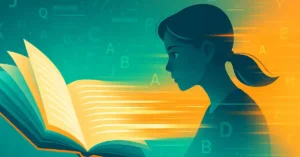Introduction
This trick for remembering historical dates sure would have been handy when I was in high school. I loved hearing about wars and gladiators but struggled with dates and anything specific.
In this section, we are concerned only with years. Other sections will cover how to remember days and months. Basic information about the event that coincides with the date will be encoded together.
Let’s get started!
Step One
First, let’s recall the major system. For more information about the major system, click here.
0 – s, z, soft c
1 – t, d
2 – n
3 – m
4 – r
5 – l
6 – sh, ch
7 – k, hard c
8 – f, v
9 – p, b
Step Two
Using the examples below, we need to convert the last three digits of the year into letters using the major system. We will not include the first digit because it’s not usually difficult to remember in which millennium the event occurred.
We will work with three different events as examples.
- 1454 Creation of the Gutenberg Printing Press
- 1765 The American Revolution Begins
- 1346 The Black Death Begins
Transcribing the numbers, we get the following:
- 4 = r, 5 = l, 4 = r
- 7 = k/c, 6 = sh/ch, 5 = l
- 3 = m, 4 = r, 6 = sh/ch
Step Three
The next step is to create catchy words and phrases to tie into the event we want to remember. So, when I need to recall the date of an event, the event triggers an image, and I can transcribe the date.
In this part, some people use multiple consonant sounds representing numbers in the same word. I have found this can be inconsistent and confusing. I may make a mistake if I genuinely rely on the mnemonic. Some consonant sounds may not belong to the number set I wish to remember.
To avoid this, I only use the first consonant sound of the word to represent the associated number. It’s consistent and clean.
Now, let’s encode these numbers:
Creation of the Gutenberg Printing Press
4 = r = Rolling
5 = l = Lithographic
4 = r = Reprints
Imagine a stone with a famous painting etched into it. You roll the stone on a piece of paper to make a print. Now, do it a second time. That is the reprint. It’s a type of printing press already: rolling lithographic reprints. You have to remember the millennium but the r, l, and r from rolling lithographic reprints inform us that the Gutenberg press was made in 1454.
The American Revolution Begins
7 = k/c = Cavalry
6 = sh/ch = Charging
5 = l = Loons
Near the water’s edge, a cavalry division charges at a group of loons. Of course, these are American soldiers!
If we remember the millennium, the rest is as easy as recalling cavalry charging loons. The c in charging represents 7, the ch in charging represents 6, and the l in loons represents 5. That gives us 1765.
The Black Death Begins
3 = m = Meerkats
4 = r = Retail
6 = sh/ch = Shaman
In a crowded market, meerkats are vendors. One particular meerkat retails shaman. The shaman is supposed to prevent the black death, but it kills people instead. The m in meerkats represents 3, the r in retail represents 4, and the sh in shaman represents 6. The black death started in 1346.
Conclusion
If you must remember many dates and events, I strongly suggest filing them in a memory palace. (For more information on memory palaces, click here.) Keeping them in a memory palace will make accessing the information easier. Also, if you need to remember more details about an event, it will be easier to keep it stored in a memory palace.
And that is how to remember dates in history!
Join Conrad Andrews on Facebook to get updates on the latest techniques in learning.






